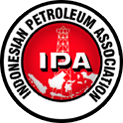Publications
Paleogeography of North East Sumatra
Proceedings Title : Proc. Indon. Petrol. Assoc., 3rd Ann. Conv., 1974
The paleogeographic investigations discussed in this paper are limited to an area east of the Barisan Range, approximately between the Tamiang River to the North and the Toba-Asahan River to the South. However, this study also needs to consider the geological evolution of adjacent areas. Since Eo-Oligocene time, sediments which are probably about 5000 to 7000 meters thick were deposited in N.E. Sumatra, in a basin configuration different from the present basinal structure which developed during the Mio-Pliocene orogenic phase. The Oligocene ",Basal Sequence", is found westwards up to Nias Island. It was deposited in a continental - to paralic environment during the initial stage of the development of the Tertiary Sumatran Geosyncline. The Oligo-Miocene ",Transitional Series",, deposited in a continental, paralic to littoral environment,, exhibits various facies, ranging from paludal, shelf, deltaic to continental. The environment of the Middle to Late Miocene Baong Formation has a neritic-to sublittoral character. The lithologic and faunal associations of the Eo-Oligocene sediments reveal a paleogeographic pattern, consisting of islands and islets surrounded by shallow water. During the Oligo-Miocene, subsidence of the backdeep basin continued, but connection with the open sea (fore-deep) was still restricted by a barrier (ridge) which probably consisted of an island arc approximately along the present western coast of Sumatra. During. Middle to Late Miocene, the emergent part of the basin subsided below sea level. Baong clay and marls were deposited in a neritic and sublittoral environment.
Log In as an IPA Member to Download
Publication for Free.
or
Purchase from AAPG Datapages.
